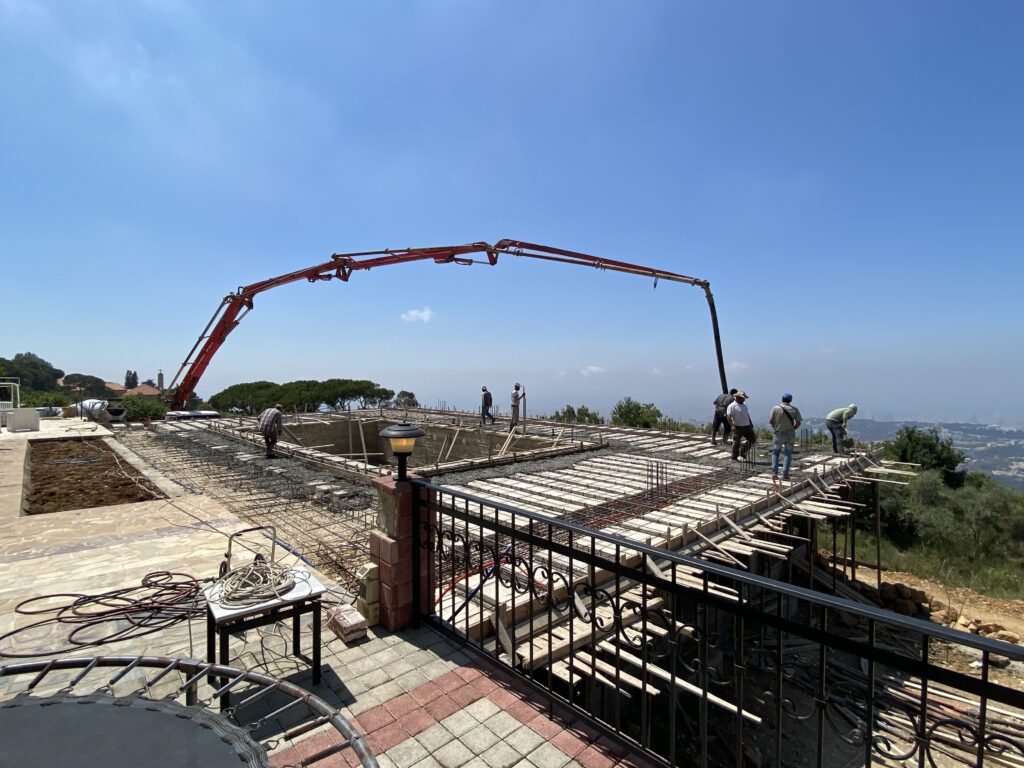California Fires: Is It Time to Rethink Wood for Concrete?

By: Ralph I. Hage / Arab America Contributing Writer
Fires sweeping through the Los Angeles area have claimed at least 24 lives, displaced thousands, and destroyed more than 12,000 structures. Driven by powerful Santa Ana winds, the Palisades, Eaton, Kenneth, and Hurst fires have burned around 62 square miles, with conditions expected to worsen before improving.
While the causes remain under investigation, one question arises: why is wood—the most common building material in the U.S.—still used? Concrete, in contrast to wood, offers enhanced fire resistance and could play a key role in reducing the risk of devastation in such areas.
The United States is notable for being one of the few countries in the world that primarily uses wood-frame construction for its buildings.
This typically involves constructing a building’s structure by assembling a framework of vertical and horizontal wooden components, such as studs for walls, joists for floors, and rafters for roofs. These elements are then joined to form the basic framework of the building. The sheathing is added to connect the studs, and the spaces within are filled with thermal insulation to prevent heat loss. The sheathing also provides a surface for exterior cladding elements like siding or shingles.
The United States continues to build in this way for several reasons. First, timber is abundant in the country. Second, it is an inherited construction method that dates back hundreds of years, originating with the earliest settlers who relied on it for its ease of sourcing.
Much of the rest of the world, including the Arab world, uses reinforced concrete for construction.
Reinforced concrete construction begins by clearing the designated area, leveling the terrain to the desired grade, and setting up reference points to mark the building’s footprint accurately. Excavation is then carried out for foundations, footings, or trenches for supporting walls. Once the substructure is in place, formwork is built using wood or metal frameworks to create molds for shaping the columns, beams, slabs, and walls. Before pouring the concrete, reinforcement bars (rebar) are cut and placed within the formwork in the form of cages, which are tied together with wire ties. Tubing for electrical wires and piping is also included. The concrete is then poured into the formwork to harden. After a few days, the concrete has set, and the formwork is removed. The concrete is then cured with water to strengthen it. At this point, the building’s shell is ready to be finished and decorated as needed.
As an architect familiar with concrete construction methods in the Arab world, I recognize this medium’s benefits and how the United States construction industry could leverage it to its advantage. This is due to several factors.
First, concrete is highly temperature-resistant due to its composition, which includes aggregate, cement, and sand. These materials are chemically inert, meaning they don’t readily react to heat. They also have slow heat transfer rates. They can absorb and gradually distribute heat, allowing concrete to maintain its structural integrity even under extreme temperatures. This is particularly evident in many concrete residences that have withstood fires.

Second, concrete is economical because it is made from readily available and relatively inexpensive raw materials. It requires low maintenance, is highly durable, and has a long lifespan. As a result, it offers lower overall construction and ownership costs compared to many other building materials.
Third, concrete is energy-efficient due to its high “thermal mass.” This means it can efficiently absorb and store large amounts of heat, reducing the need for excessive heating or cooling throughout the day.
Fourth, concrete is more water-resistant than wood due to its denser, less porous structure. This makes it less likely to absorb moisture and reduces its susceptibility to decay and rot caused by water exposure.
While concrete has many other beneficial characteristics, the points above highlight some of its environmental advantages and low-maintenance features.
While I respect the preference for wood construction, the United States could benefit significantly from incorporating concrete. Although wood and timber have been the traditional choice, the country has always been open to progress and innovation.
Sending safe wishes to everyone from the Arab American community.
Ralph Hage, a Lebanese American architect and writer, divides his time and work between Lebanon and the United States.
Check out our blog here!








